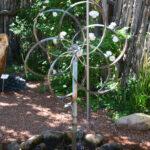Everything You Need to Know About Bronze Sculptures
The origin of sculptures can be traced back to the ancient era of Greece and Egypt. Egypt is known for its famous statue of the Sphinx, the human head with a lion body. On the other hand, Greece has patterned its sculpture to Egypt and is known for its statues of Greek gods. Ancient people also sculpted different animal figures and other images as their expression of art or religious beliefs.
One of the oldest materials used for sculpting is bronze. It is more commonly used for monuments than in fine arts. In the early years of bronze, it was made using copper and arsenic; later on, bronze was made from a mixture of copper and zinc. Nowadays, bronze is made of copper and tin. Whatever the composition is, artists have their reasons for choosing bronze instead of any other available materials.
Why Do Artists Prefer Using Bronze?
Although bronze is seen as inferior to marble and metal sculptures, artists prefer bronze because of its durability and unparalleled aesthetic. Unlike marble, bronze is far from being fragile. In terms of the sculpting process, bronze can be easily manipulated to fit the artist’s concept. More details and accuracy can be achieved by using bronze.
Marble and other hard materials have to be chiseled to be molded, and it can take a lot of time before you see a result. In contrast, bronze sculpting is much easier because casting is the only process involved. Sculpting is the process of pouring the hard bronze into a mold to achieve a three-dimensional design.
What’s more impressive about bronze is that it is reusable. When the bronze is cast onto the mold, the artist must wait for it to solidify, and once it hardens, it will slightly expand. Likewise, if the bronze is exposed to a colder temperature, it will further contract, making it easier to remove from the mold.
How Do You Create a Bronze Sculpture?
- Molding Process
Bronze-casting started in early European workshops called foundries. As they work with multiple bronze sculptures, they used two different methods of casting the bronze. The differences are mainly in how the molds are made and how the bronze is poured onto the mold. These methods are lost-wax casting and hollow lost-wax casting.
In lost-wax casting, the mold is made using wax. Another mold will be patterned from the wax, and as it acquires the form of the wax, the wax will then be melted. The bronze will now be cast in the new mold. While lost-wax casting is the most common method, artists find it difficult to create larger figures like garden art sculptures.
On the other hand, hollow lost-wax casting involves more procedures and can be broken down into two different methods: indirect and direct. In direct lost-wax casting, a clay mold will be layered with wax and placed in a mold. This means that the clay mold will be part of the final sculpture. In indirect hollow lost-wax casting, the mold does not become part of the final piece and can still be used to reproduce the same design.
- Final Touches
Once the bronze has solidified in the mold, the artist will apply final touches to the sculpture. If there are any blemishes in the molding process, the artist will flatten the formed bubbles. The next step is through the application of patina or paint.
In patination, a varnish made from acid and wax is applied to the sculpture. The artist can turn the three-dimensional art into a greenish or yellowish color depending on the patina solution. Patina is also used to highlight select parts of the sculpture.
Aside from patination, cold-painting can also be used. Through cold-painting, you can create silver sculptures by using layers of lead-based dust.
Conclusion
Sculptures have a rich history that dates back thousands of years. Bronze is often an overlooked material, but it creates more accurate sculptures, and it can be reproduced through different molding methods. Bronze sculptures can add a lot of beauty and character wherever it is placed.
Does this blog make you interested in sculptures? Try adding them to your garden and see how they change your exterior aesthetic. Buy yard sculptures from Mark White Fine Art, and you might find the right piece of art to give your yard a breath of life!



